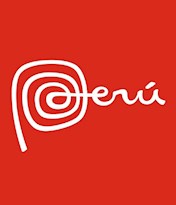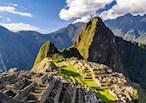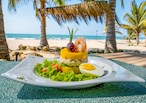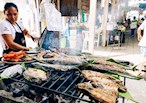Nestled along the western edge of South America, Peru is a nation with many faces. From the snowy peaks of the Andes and the vast expanses of the Amazon rainforest, to the long coastline that opens to the Pacific Ocean, Peru's landscape is as varied as its cultural heritage. Once home to the great Inca Empire, today's Peru is a modern nation with bustling cities and picturesque villages, and a multicultural society with a unique, versatile gastronomy.
 Anticuchos are one of the most popular street foods in Lima - Credits: Shutterstock
Anticuchos are one of the most popular street foods in Lima - Credits: Shutterstock
The roots of Peruvian cuisine can be traced back over 5,000 years to the indigenous peoples of the Andes, including the Incas. Their greatest contribution to global gastronomy was probably the domestication of the potato, a tuber that has since become a staple in almost every country in the world. Today, Peru cultivates somewhere between 3,000 and 4,000 varieties, from purple and pink to red and blue, each with its own taste, texture, and culinary application.
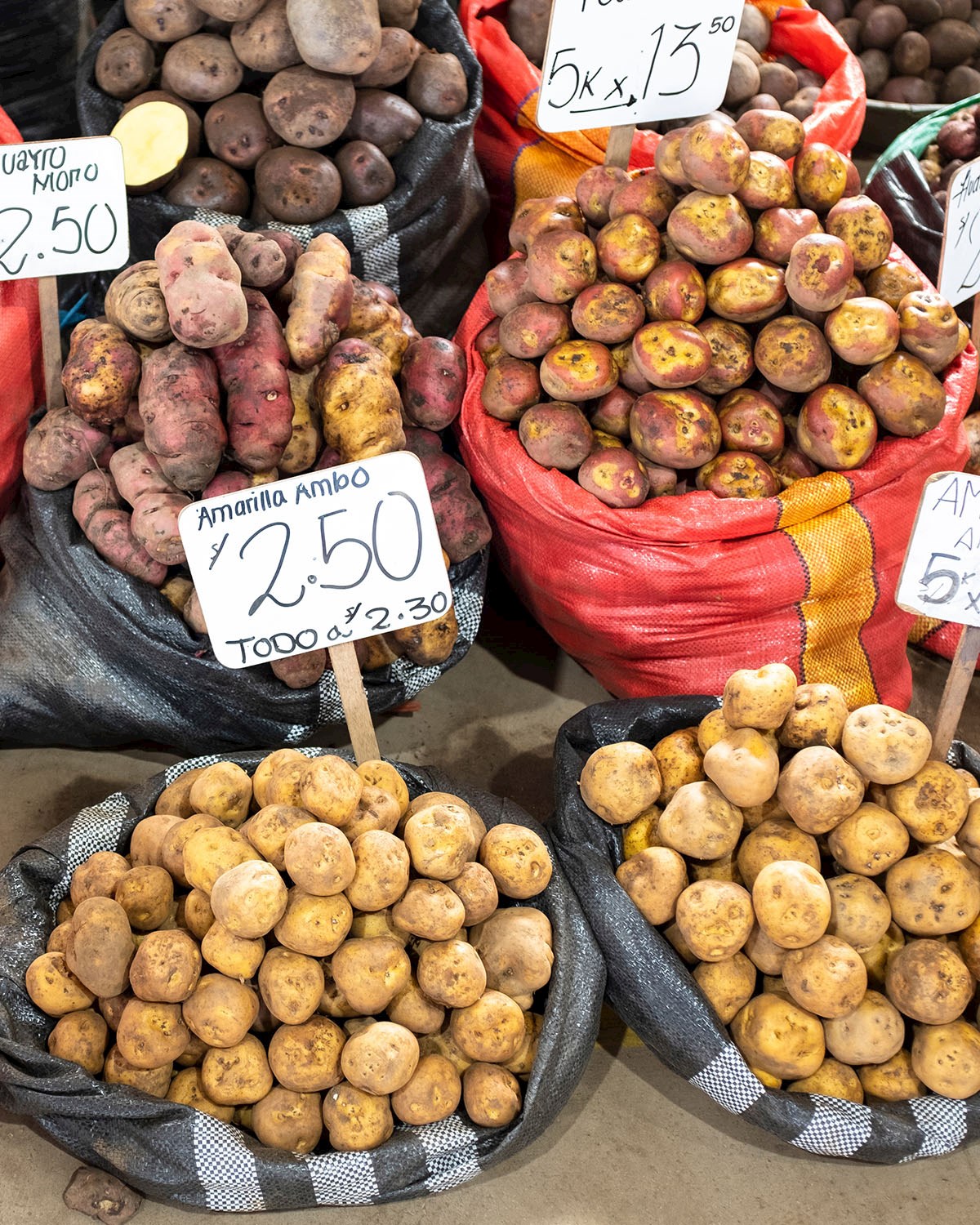 Just a few of about 4,000 Peruvian potato varieties - Credits: Shutterstock
Just a few of about 4,000 Peruvian potato varieties - Credits: Shutterstock
Although they probably didn't originate from modern-day Peru, corn and chili peppers are two ingredients that spread through the territory very fast after their initial domestication and became a staple in local (and later global) cuisine. Choclo is the most prominent representative of the Peruvian corn (among more than 50 varieties), with its large, juicy kernels that are used in almost every traditional dish. On the other hand, with more than 300 varieties of chili pepper, aji amarillo and rocoto being the most notable, Peru proudly boasts its position as one of the "spiciest" countries in the world.
 Sun-drying chili peppers - Credits: Shutterstock
Sun-drying chili peppers - Credits: Shutterstock
Peru is home to an incredible diversity of fruits, many of which are not found anywhere else in the world. This is due to the country’s varied geography, which includes everything from the Andes Mountains to the Amazon rainforest.
One reason why Peruvian fruits are so delicious is because of the country’s rich volcanic soil. This soil is full of nutrients that help the fruits to grow sweet and flavorful. Another reason is because of the way they are harvested: most Peruvian fruits are hand-picked at their peak ripeness. This ensures that the fruits are fresh and full of flavor.
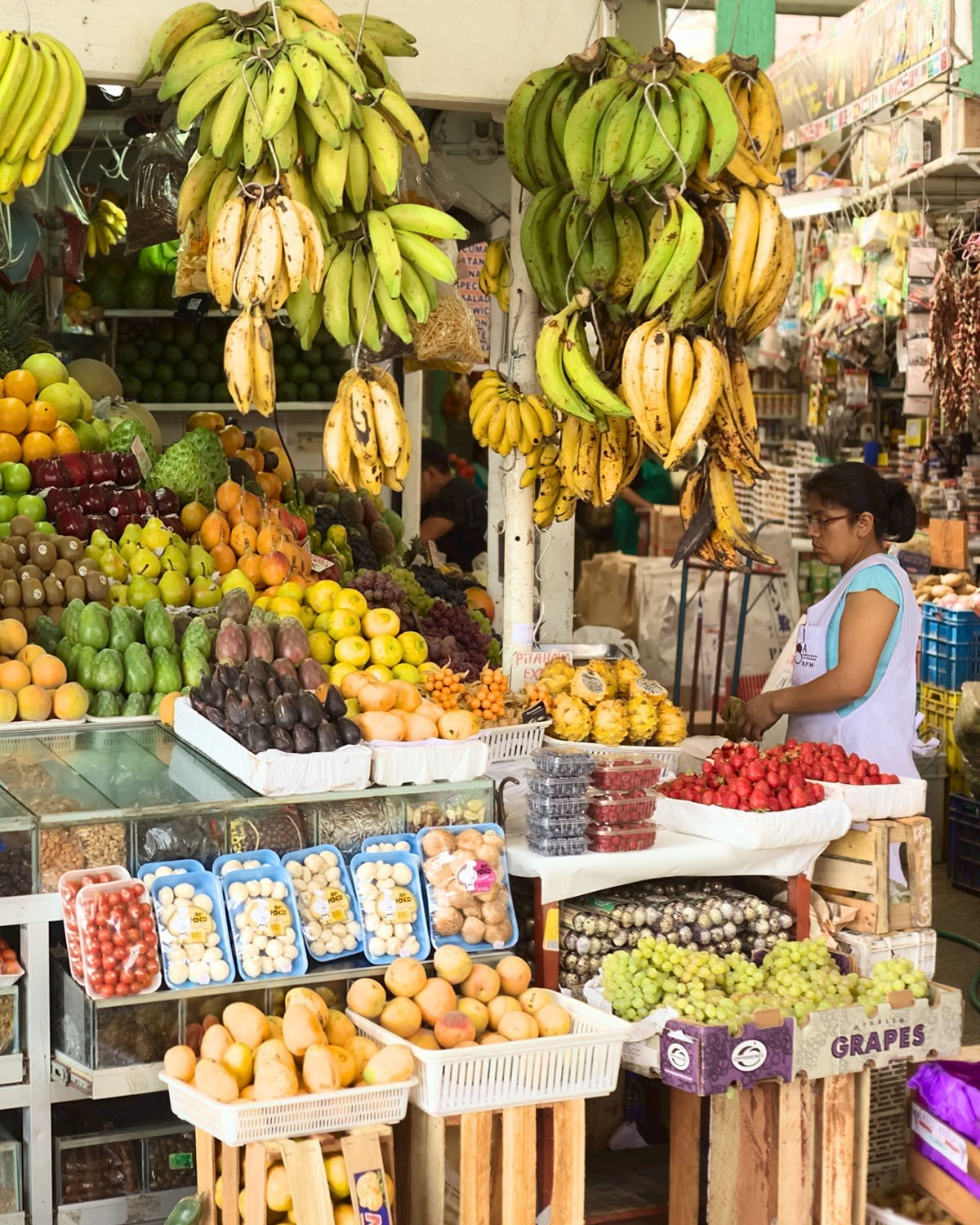 Peru is the home to dozens of exotic fruits and vegetables - Credits: Shutterstock
Peru is the home to dozens of exotic fruits and vegetables - Credits: Shutterstock
Some of the most delicious and unique representatives include Lucuma, often called the "gold of the Incas", a sweet fruit with a creamy texture, commonly used in desserts and ice creams. Camu camu is a cherry-like fruit that has one of the highest concentrations of vitamin C of any fruit worldwide, while soft white flesh of cherimoya tastes like a combination of pineapple, banana, and strawberry.
There is also an abundance of exotic vegetables, most representative being olluco, a tuber similar to potato that is used in traditional soups and stews, and maca, a root vegetable known for its medicinal properties, often ground into a powder and used as a supplement.
All of this and much more make up a foundation of Peruvian traditional cuisine, and if one would like to taste as much of it as possible in one place, Lima is the way to go.
Peru's capital is a true representative of the nation's rich history, numerous cultural influences, and exceptional culinary diversity. Founded in 1535 and dubbed "The City of Kings" by Spanish conquistador Francisco Pizarro, it has grown into a modern metropolis that preserved its ancient roots, which is evident on every corner, in its streets, architecture, and traditions.
Over the past decades, Lima has emerged as a must-visit destination for globetrotters, particularly for those who enjoy this kind of unique combination of modern and historic, and have an appetite for world-class gastronomy, be it the modest street food vendors or luxury restaurants.
Why visit Lima?
Lima's historic center, a UNESCO World Heritage site, can be perceived as a grand open museum. Each way one looks or goes, something truly fascinating awaits. From the ornate colonial buildings like the Basílica Cathedral and the Convent of San Francisco (those who dare can also visit its mysterious catacombs), to the Archbishop's Palace and Goyeneche House, this part of the city offers a tangible connection to the ancient world.
However, the history of Lima didn't start with the arrival of the Spanish conquistadors. Almost 1,500 years before them, Lima was home to the Lima culture. Their greatest, still-standing monument is Huaca Pucllana, a sprawling pyramid built from small adobe bricks. This archaeological site in the Miraflores district offers a rare glimpse into the pre-Columbian era of Lima.
 Parque Chino in Miraflores - Credits: Lima Perú
Parque Chino in Miraflores - Credits: Lima Perú
Situated a bit outside the main city is another pre-Incan monument, the great Pachacamac. This massive archaeological site was a place of worship of the Pacha Kamaq deity, who was considered a creator of the civilization that lived there around A.D. 200. The complex boasts temples, plazas, and dwellings, painting a comprehensive picture of religious life almost two millennia ago.
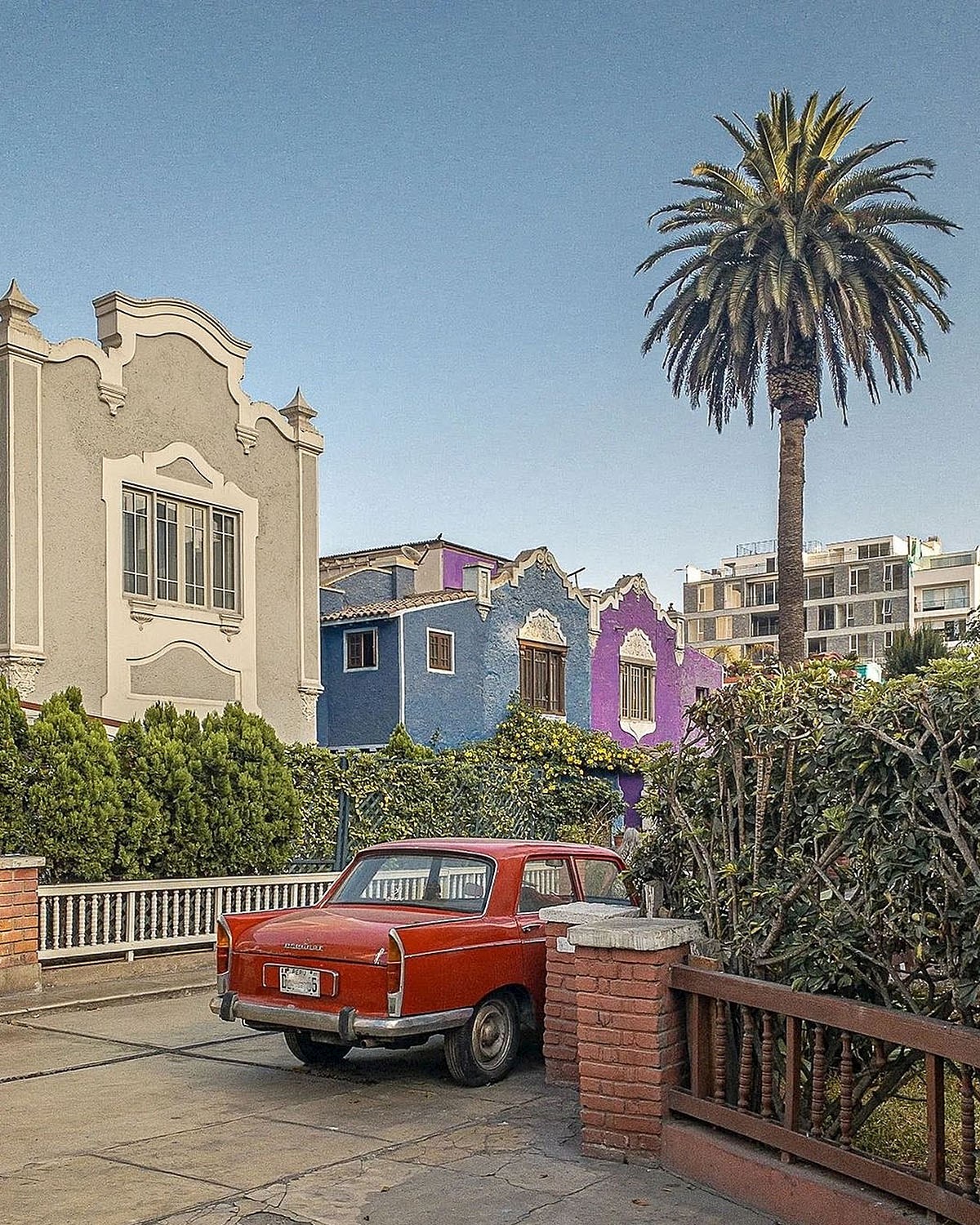 Old-timer parked on the quiet street of Miraflores - Credits: Lima Perú
Old-timer parked on the quiet street of Miraflores - Credits: Lima Perú
But Lima is not all ancient. If one wants to escape from history and get back to the 21st century, districts like Miraflores and San Isidro offer Lima's modern, cosmopolitan side with their high-rises, chic boutiques, and vibrant nightlife. And for those seeking something more alternative, the bohemian district of Barranco, with its graffiti-laden walls and artisanal boutiques, offers a more laid-back side of the metropolis.
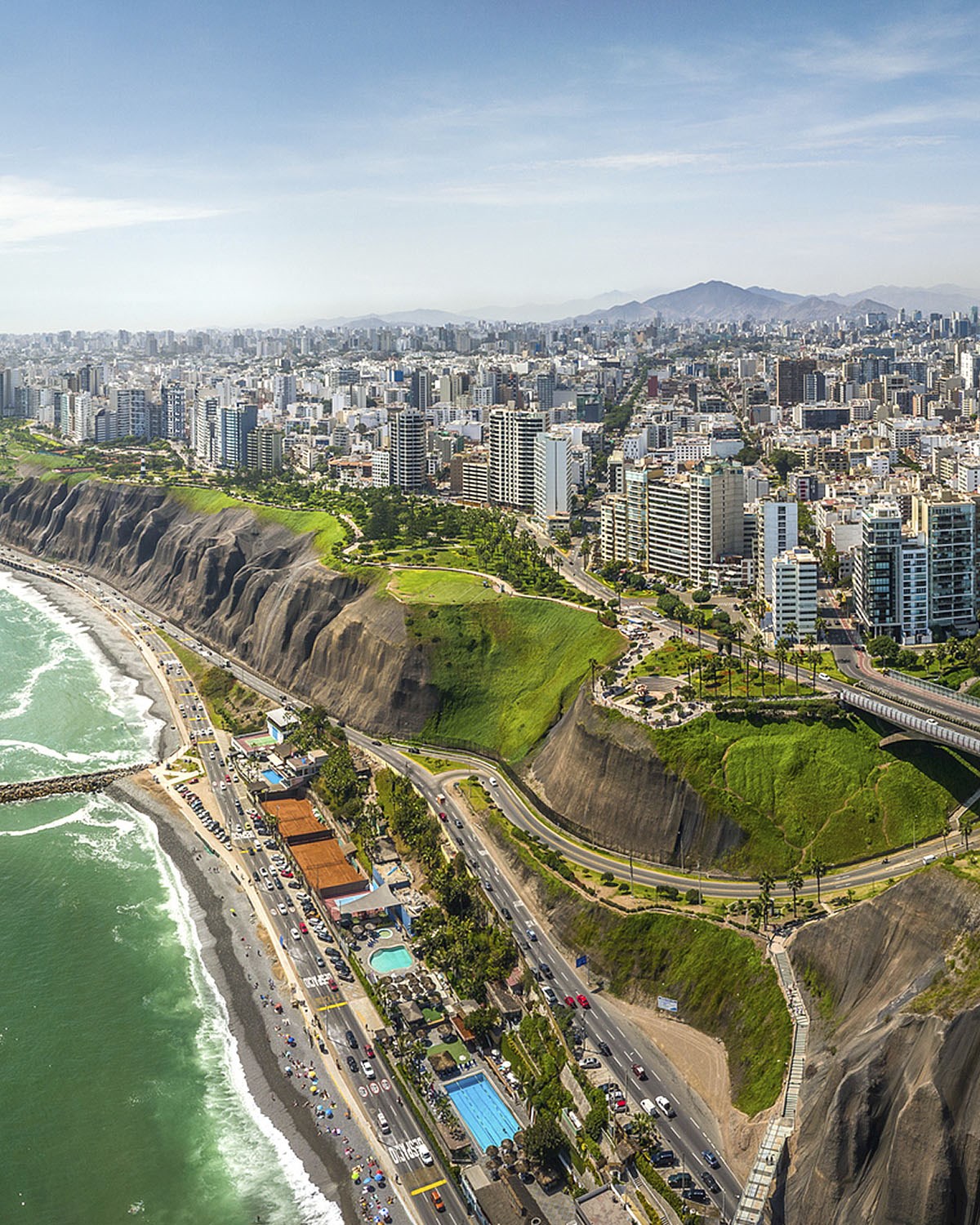 Ariel shot of Costa Verde in Miraflores - Credits: Peru.Travel
Ariel shot of Costa Verde in Miraflores - Credits: Peru.Travel
Beyond the urban sprawl, Lima surprises with its pockets of preserved nature. Parque del Amor, with its Gaudí-esque mosaics, is an ode to romance, while the El Malecón, a cliff-top walkway in Miraflores, provides breathtaking views of the Pacific. Here, visitors can watch paragliders take off against the backdrop of a setting sun or even try this extreme sport themselves. Southward, the Lomas de Lachay — a mist-fed eco-reserve — makes for a great field trip, and an opportunity to come across some of its many endemic species.
Every facet of Lima, from its music-filled peñas (traditional music venues) to its bustling mercados, resonates with its multicultural heritage. The city stands as a testament to how different cultures, when combined together, can create rich, intricate experiences. It also serves as the primary entry and exit point for international travelers. Its strategic location makes it an ideal base for trips to the Andes, the Amazon, or the iconic Machu Picchu.
 Open air street vendor selling scones and fried bread - Credits: Shutterstock
Open air street vendor selling scones and fried bread - Credits: Shutterstock
Culinary melting pot
Lima's cuisine is a melting pot of indigenous, Spanish, African, and Asian influences, making it one of the most diverse culinary destinations in the world. In fact, the city is often referred to as the "Gastronomic Capital of the Americas".
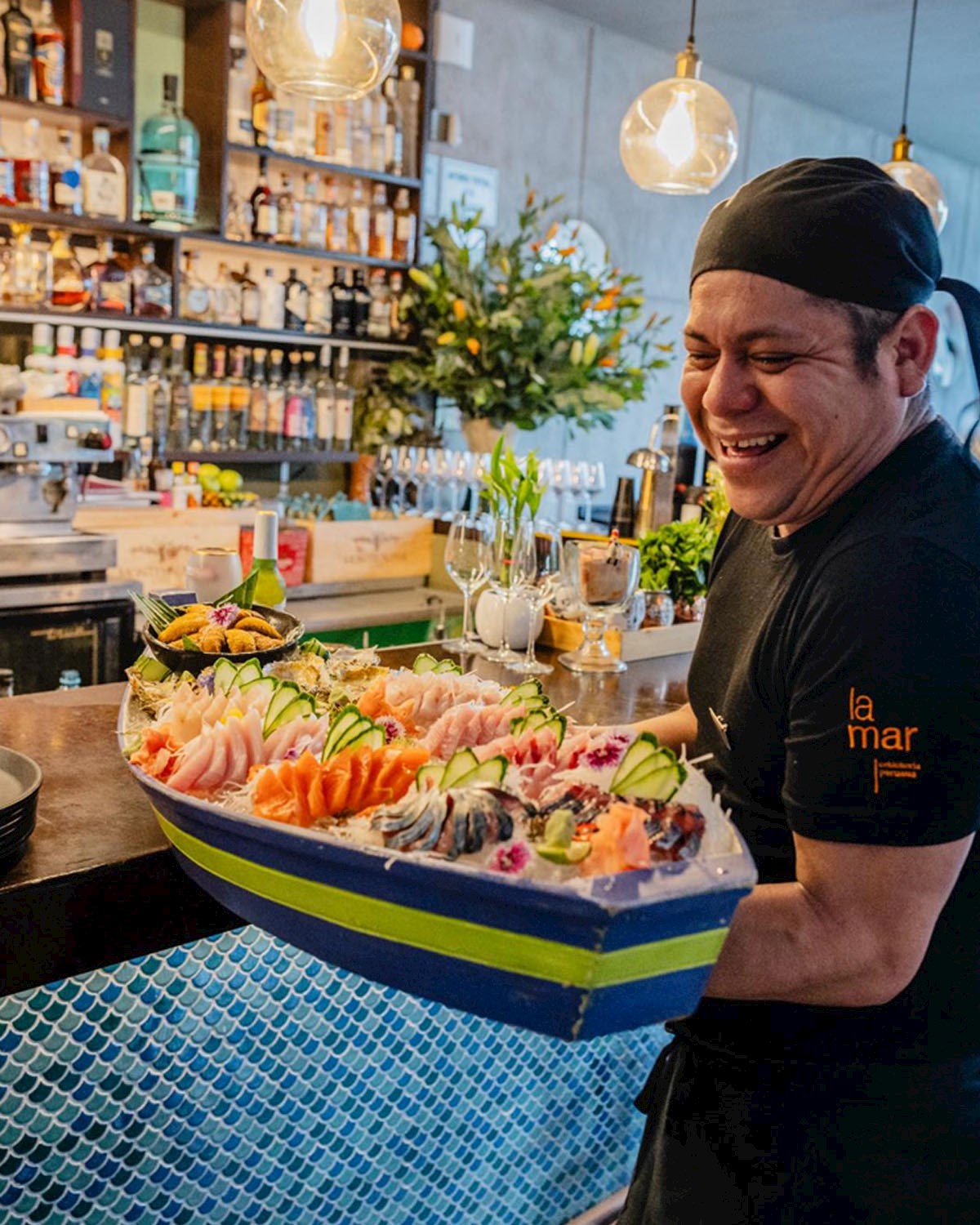 Nikkei cuisine, a combination of Japanese and Peruvian traditions - Credits: La Mar Cebichería
Nikkei cuisine, a combination of Japanese and Peruvian traditions - Credits: La Mar Cebichería
CEVICHE
Many countries claim their versions, but Peru was the one that started the whole "cooking" with citrus acid thing. The iconic ceviche embodies the essence of Peruvian cuisine: freshly caught fish, typically marinated in tangy lime juice, combined with red onions, cilantro, and rocoto peppers. The flavors of ceviche are slightly acidic and spicy, with an intense aroma of the sea and a tender texture. Traditionally, it is served on a bed of lettuce with tiny pieces of corn, chunks of sweet potato, and boiled yuca, and it can be found in cevicherias (specialized ceviche restaurants) all over the city.
 Credits: La Mar Cebichería
Credits: La Mar Cebichería
POLLO A LA BRASA
On average, each Peruvian eats pollo a la brasa three times a month, which makes this crunchy and juicy charcoal-grilled chicken one of the, if not the most popular, dishes in the country. Pollo a la brasa was first invented in Lima in the 1950s, when it was seasoned only with salt, but nowadays the chicken is often marinated in a special combination of ingredients, usually consisting of vinegar, salt, pepper, rosemary, chili, and dark beer, making it a favorite not just with the locals.
 Credits: Shutterstock
Credits: Shutterstock
Learn more about Pollo a la brasa
TIRADITO
It may look like just another variation of ceviche, but tiradito is something completely different. Influenced by Japanese immigrants, tiradito consists of thinly sliced, well-chilled raw fish, chopped vegetables, and coriander, all drizzled with lemon and lime juices right before consumption, so the fish stays raw, unlike ceviche, where the fish is already "cooked" in citrus juices. One of the best representatives of Nikkei (Japanese-Peruvian) cuisine, tiradito is most often served as an appetizer, and some cooks like to add their own touch – topping it with sliced onions, pickled jalapeños, boiled corn, and even crushed potato chips.
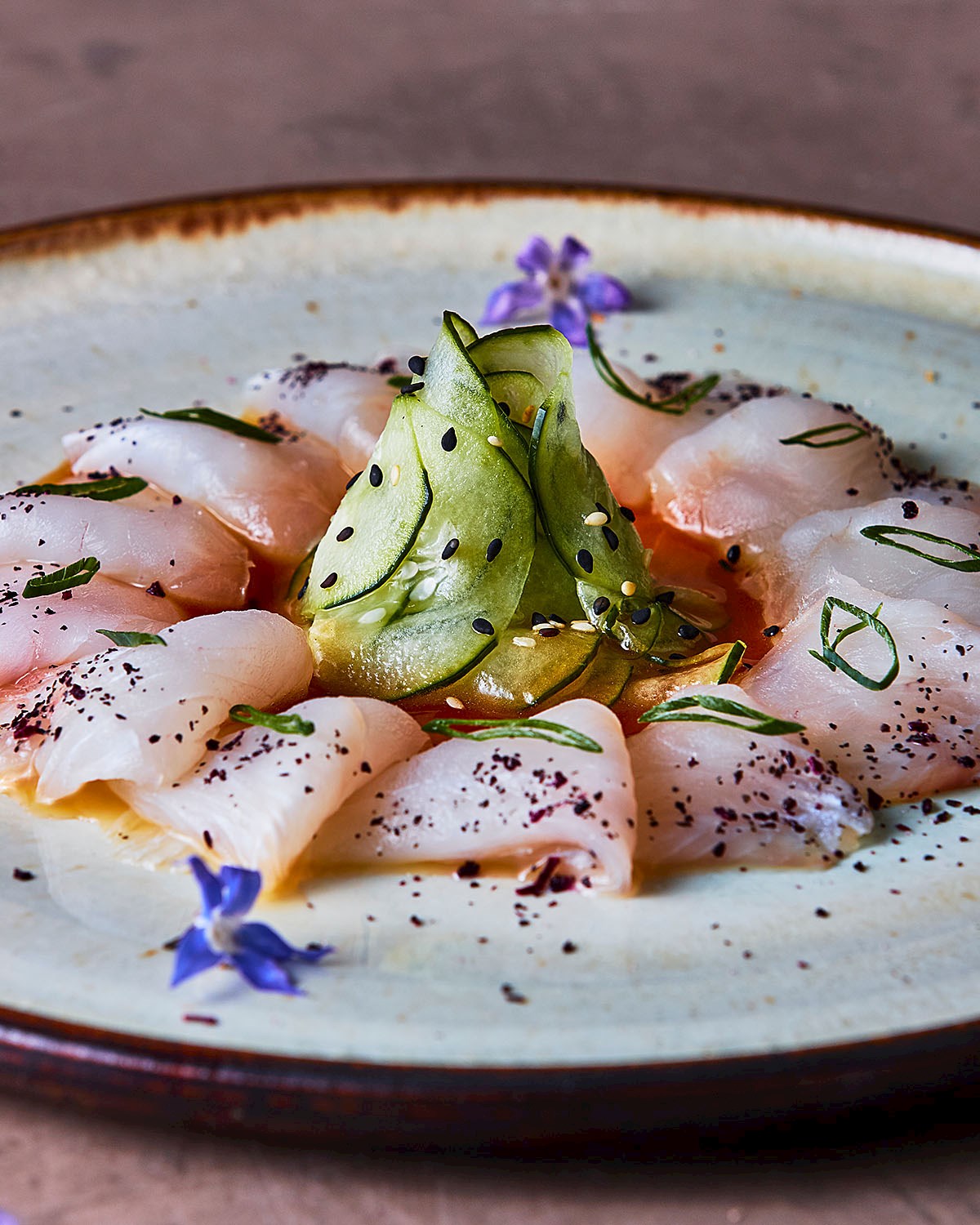 Credits: Shutterstock
Credits: Shutterstock
ANTICUCHOS
You may find good meat ones, but when it comes to anticuchos, the way to go is heart. Anticuchos de corazón are skewered and grilled beef or alpaca hearts, a delicacy dating back to the Inca times. Marinated in a blend of garlic, vinegar, and spices, anticuchos are commonly paired with boiled potatoes or corn and served with a spicy rocoto pepper sauce. They are often sold by street vendors and are a testament to Peruvian ability to turn even the simplest ingredients into gourmet fare.
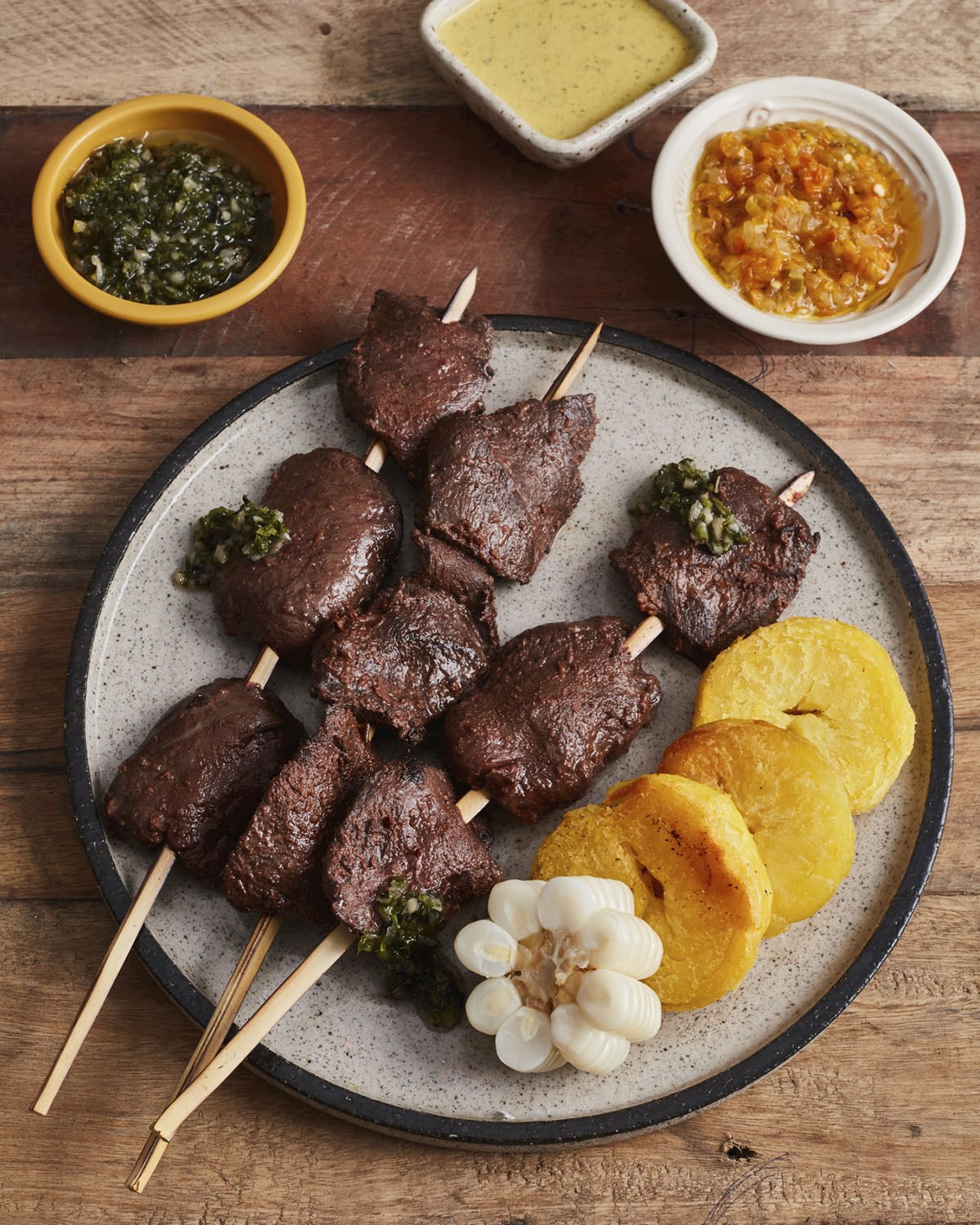 Credits: Peru.Travel
Credits: Peru.Travel
 Credits: Shutterstock
Credits: Shutterstock
LOMO SALTADO
Lomo saltado is a quintessential chifa (Chinese-Peruvian) dish that beautifully melds the culinary traditions of the Andes with Asian influences. At its core, the dish consists of thinly sliced beef, stir-fried with onions, tomatoes, and a blend of spices. It's characterized by its savory soy sauce and vinegar-based marinade, which gives the dish its unique depth of flavor. Traditionally, lomo saltado is served with crispy French fries and a side of white rice, and can be found on the menus of almost every restaurant, whether simple or upscale.
 Credits: Peru.Travel
Credits: Peru.Travel
BUTIFARRA
Peruvians love their sandwiches, and in Lima, butifarra reigns supreme. The central ingredient is jamón del país, a garlic-infused peppery ham, typically layered inside a fresh crusty bread roll (pan francés or ciabatta), and is complemented by tangy red onion relish called salsa criolla. Over time, it has become a staple of Lima's street food scene and is widely enjoyed during daily life.
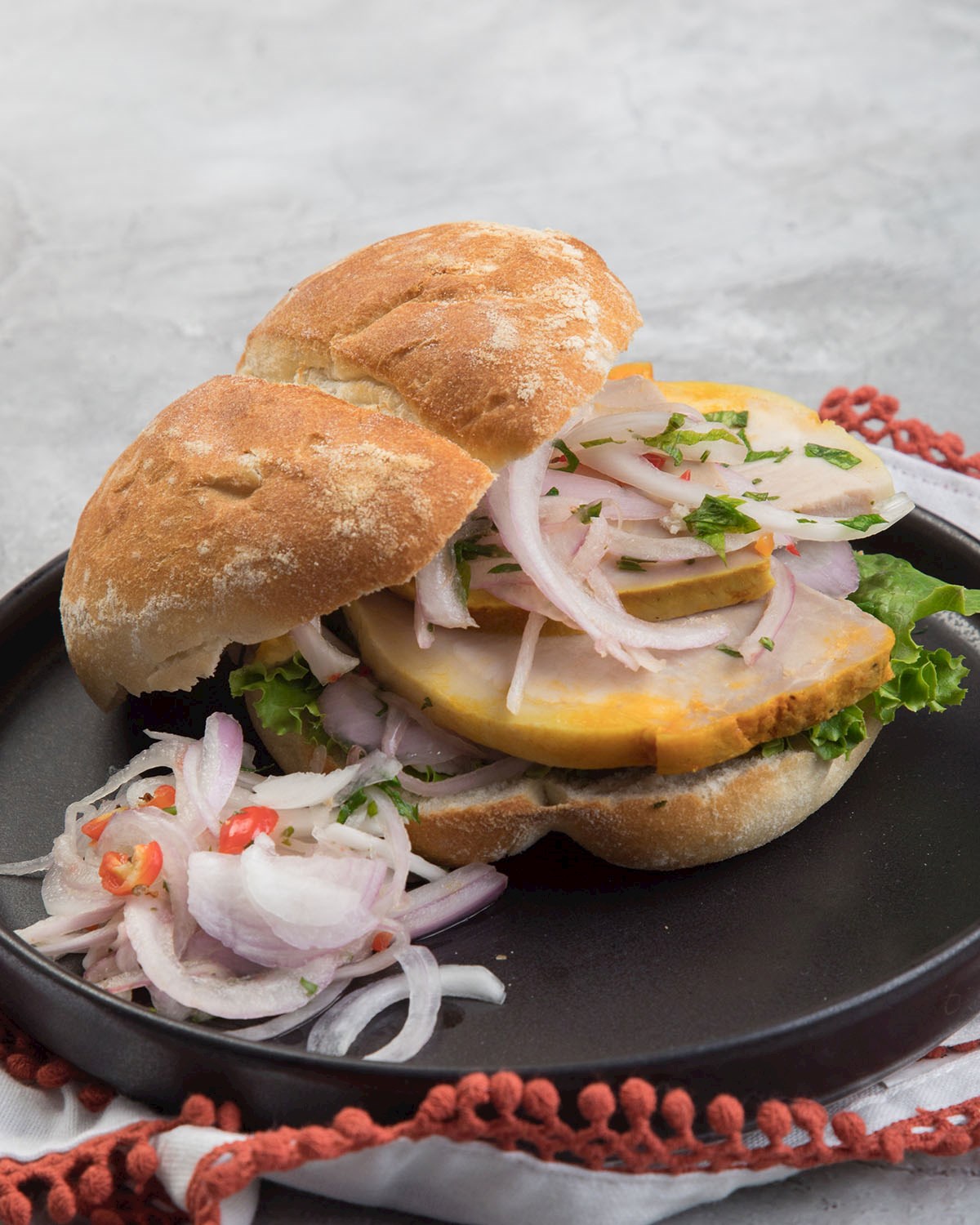 Credits: Shutterstock
Credits: Shutterstock
SALCHIPAPAS
Salchipapas is a beloved street food dish in Lima, representing the epitome of comfort food for many locals and visitors alike. This simple dish comprises thinly sliced sausages (salchichas) and potatoes (papas), often served together on a plate and traditionally served with four dipping sauces: ketchup, mayonnaise, mustard, and spicy aji pepper sauce. Originating as a budget-friendly snack, salchipapas has transcended socio-economic boundaries and is now enjoyed by people from all walks of life.
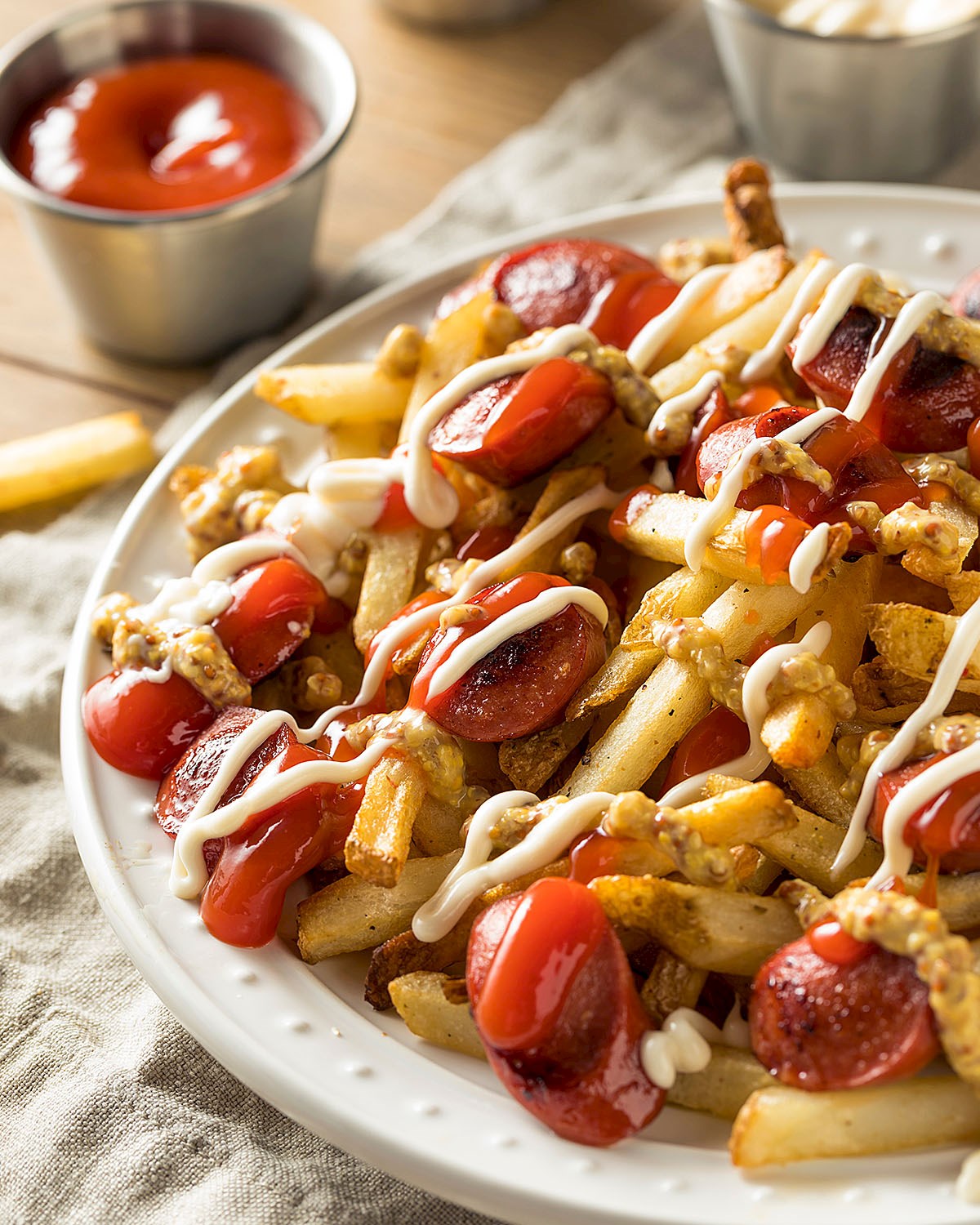 Credits: Shutterstock
Credits: Shutterstock
PICARONES
Picarones are a delectable Peruvian dessert similar to doughnuts, but with a unique Andean twist. Made primarily from a mix of sweet potato and squash dough, they are deep-fried to achieve a crispy exterior while retaining a soft and airy inside. These ring-shaped treats are then typically doused in a syrup made from raw sugarcane, known as chancaca. Originating from the colonial era, picarones were inspired by the Spanish buñuelos, yet they have taken on a distinct identity in Peruvian culture.
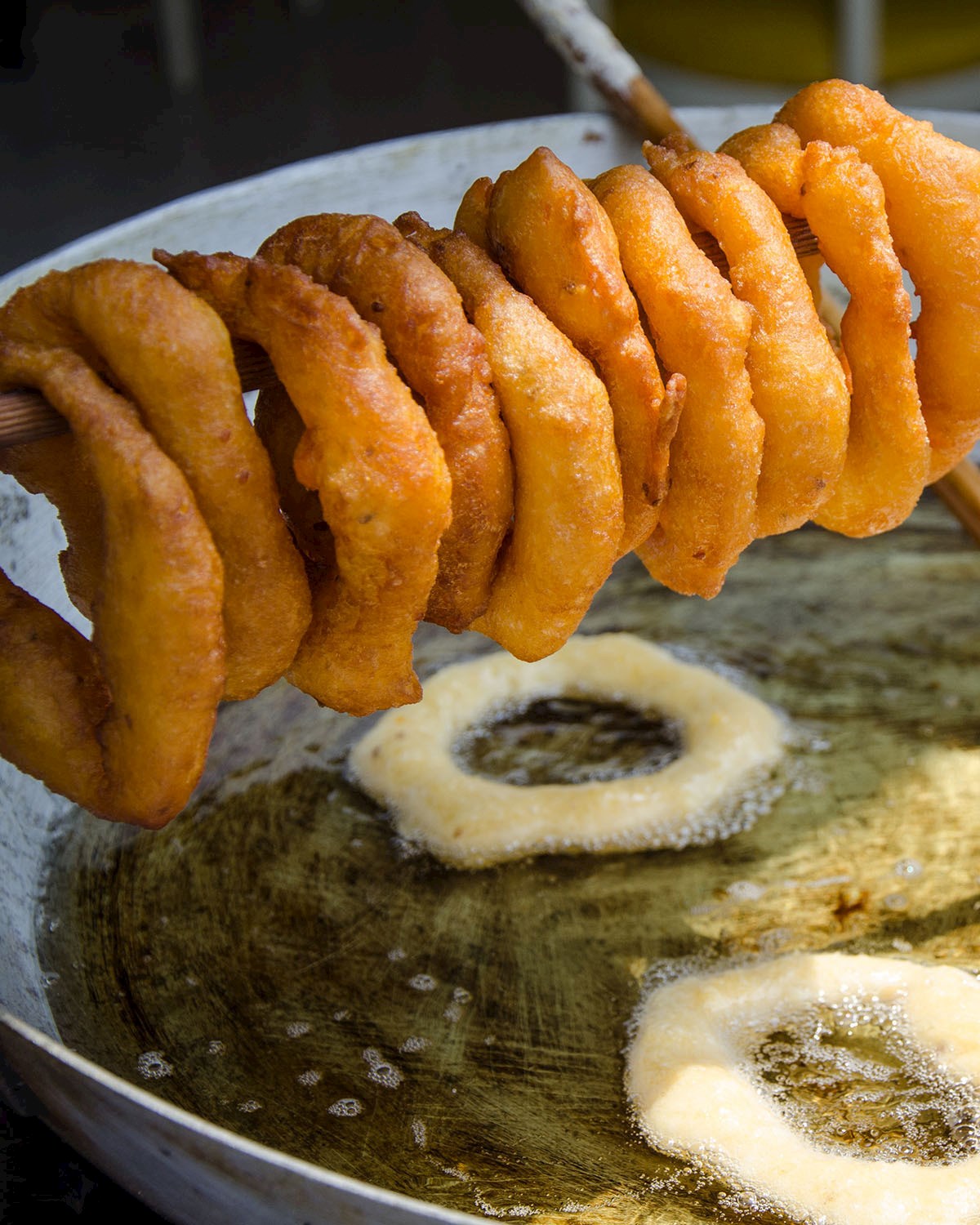 Credits: Shutterstock
Credits: Shutterstock
PISCO SOUR
No culinary journey to Lima is complete without tasting Peru's national drink, Pisco Sour. Made with Peruvian pisco (a type of grape brandy), the drink is balanced with the sharpness of fresh lime juice and the sweetness of simple syrup. A defining characteristic is its frothy top layer, achieved by adding and vigorously shaking egg whites. Garnished with a few drops of Angostura bitters, Pisco Sour is a refreshing go-to at the bar or after a hearty meal.
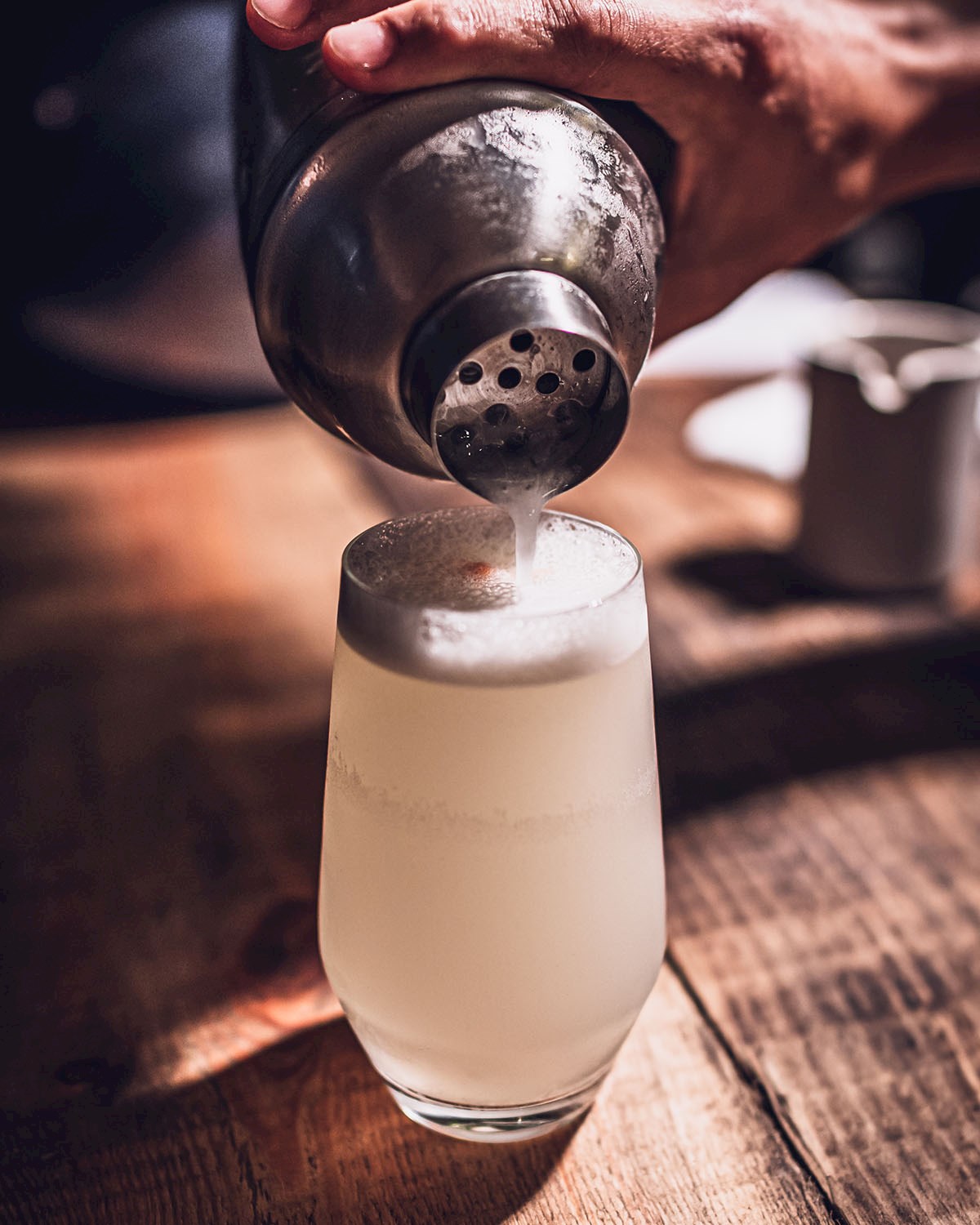 Credits: Shutterstock
Credits: Shutterstock
When it comes to eateries, Lima has something for every palate. Although studded with Michelin-stared restaurants like Astrid y Gastón and La Mar Cebichería, Lima offers plenty of traditional restaurants that serve authentic, local dishes.
Isolina Taberna Peruana has a legendary status in the Barranco district, celebrating traditional cuisine with age-old recipes, ensuring every morsel is a bite into history. The iconic El Bolivariano in Pueblo Libre has all the comida criolla staples one has to try while in Lima with an abundance of pisco and pisco-based drinks, and patrons are encouraged to dance to the sounds of salsa and other South American music.
 Dinner among locals at the traditional Isolina Taberna Peruana - Credits: Isolina Taberna Peruana
Dinner among locals at the traditional Isolina Taberna Peruana - Credits: Isolina Taberna Peruana
In the heart of Miraflores, El Bodegon entices with a nostalgic ambiance, serving dishes that resonate with the comfort of a Peruvian grandmother's kitchen. Panchita, a gem from globally renowned chef Gastón Acurio's portfolio, is a mecca for meat lovers, focusing on traditional 'criollo' techniques and flavors, introducing patrons to an array of native meats and preparations.
And if you want to eat and drink with the locals, Antigua Taberna Queirolo is a sure bet. One of the, if not the oldest tavern in Lima, is the perfect setting to sip on a classic pisco while nibbling on traditional snacks. Doesn't get much more authentic than that!

